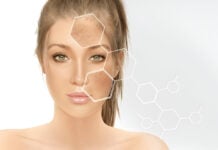As the global climate continues to shift, our skin the body’s largest organ that is increasingly affected. From record-breaking heatwaves to rising pollution levels, climate change is not just an environmental issue but a growing dermatological concern. Climate-sensitive skin conditions are becoming more prevalent, with dermatologists reporting increased flare-ups of eczema, rosacea, acne, and other inflammatory disorders during periods of environmental stress.
The Link Between Climate and Skin Health
Our skin interacts constantly with the environment, acting as both a barrier and a sensor. When environmental conditions become extreme, such as during heatwaves, high humidity, or pollution surges, the skin’s balance can be disrupted. This can lead to inflammation, increased sensitivity, and worsening of chronic skin issues.
Heatwaves: Triggering Inflammation and Irritation
Heatwaves can wreak havoc on the skin. High temperatures combined with humidity result in excessive sweating, which clogs pores and contributes to acne breakouts and folliculitis. Sweat and friction, particularly in skin folds, can also lead to intertrigo and heat rashes.
Individuals with eczema and rosacea often report flares during hot weather. Heat dilates blood vessels, intensifying redness and irritation. In addition, elevated temperatures increase transepidermal water loss (TEWL), which leads to dehydration and compromises the skin’s barrier function, making it more susceptible to allergens and irritants (Perera et al., 2020).
Air Pollution: A Hidden Aggressor
Air pollution is a silent but powerful enemy of skin health. Pollutants like particulate matter (PM2.5), nitrogen dioxide, and ozone generate oxidative stress, which accelerates skin aging, worsens acne and eczema, and promotes hyperpigmentation (Krutmann et al., 2017).
These microscopic particles can penetrate the stratum corneum, leading to collagen degradation, loss of elasticity, and an increase in fine lines and wrinkles. Pollutants also damage the skin barrier and activate immune responses, which result in chronic inflammation and heightened skin sensitivity (Puri et al., 2017).
UV Radiation: The Constant Threat
Ultraviolet radiation is another major factor intensified by climate change. Depletion of the ozone layer and prolonged sun exposure during heatwaves increase the risk of sunburn, photoaging, and skin cancer.
UV exposure also worsens autoimmune skin conditions like cutaneous lupus erythematosus and dermatomyositis, while impairing the skin’s ability to repair itself (Afaq & Mukhtar, 2006). Additionally, conditions like melasma and solar urticaria may become more frequent or severe with heightened UV levels.
Who Is Most at Risk?
Climate-sensitive skin conditions can affect anyone, but some groups are more vulnerable than others:
- Children: Their thinner skin and immature barrier function make them more reactive.
- Elderly individuals: Aging skin is more fragile and less resilient to environmental stress.
- Patients with chronic skin diseases: Those with psoriasis, eczema, or acne may experience more frequent or severe flare-ups.
- Urban populations and outdoor workers: Constant exposure to pollution, UV radiation, and heat increases their risk.
Protecting Your Skin in a Changing Climate
While we cannot change the weather, we can adapt our skincare to reduce environmental damage:
- Hydration: Drink sufficient water and use moisturizers with ingredients like hyaluronic acid and glycerin.
- Barrier Repair: Use products rich in ceramides and niacinamide to support skin function.
- Sunscreen: Apply a broad-spectrum sunscreen with SPF 30 or higher daily.
- Antioxidants: Incorporate serums with vitamin C, vitamin E, or ferulic acid to neutralize oxidative stress.
- Gentle Cleansing: Wash with non-irritating cleansers to remove pollutants without damaging the skin.
- Avoid Peak UV Exposure: Limit time outdoors during midday hours when UV radiation is strongest.
Dermatologists and Climate-Aware Care
The role of dermatologists is expanding to include environmental skin health. Many now emphasize climate awareness in treatment planning and patient education. In some regions, dermatology guidelines are beginning to incorporate climate-related risk factors and prevention strategies (Borba et al., 2021).
As climate change continues to evolve, it is increasingly important to recognize and manage climate-sensitive skin conditions. Environmental triggers like heat, UV radiation, and pollution can significantly affect skin health, particularly in vulnerable populations. By understanding these factors and adopting a proactive skincare approach, we can help mitigate their effects and preserve skin integrity in a changing world.
References:
- Afaq, F., & Mukhtar, H. (2006). Effects of solar radiation on cutaneous detoxification pathways. Journal of Photochemistry and Photobiology B: Biology, 82(1), 1–10. https://doi.org/10.1016/j.jphotobiol.2005.10.008
- Borba, V. V., Zandman-Goddard, G., Shoenfeld, Y., & Levy, R. A. (2021). Climate change and autoimmune skin diseases: The future is now. Clinical Reviews in Allergy & Immunology, 61(2), 266–274. https://doi.org/10.1007/s12016-020-08835-2
- Krutmann, J., Liu, W., Li, L., Pan, X., Crawford, M., Sore, G., … & Schikowski, T. (2017). Pollution and skin: from epidemiological and mechanistic studies to clinical implications. Journal of Dermatological Science, 76(3), 163–168. https://doi.org/10.1016/j.jdermsci.2014.08.008
- Perera, C., Agnihotri, G., & Premkumar, M. (2020). Climate change and atopic dermatitis: Is the link real? Indian Dermatology Online Journal, 11(4), 519. https://doi.org/10.4103/idoj.IDOJ_207_19
- Puri, P., Nandar, S. K., Kathuria, S., & Ramesh, V. (2017). Effects of air pollution on the skin: A review. Indian Journal of Dermatology, Venereology and Leprology, 83(4), 415. https://doi.org/10.4103/0378-6323.199579












